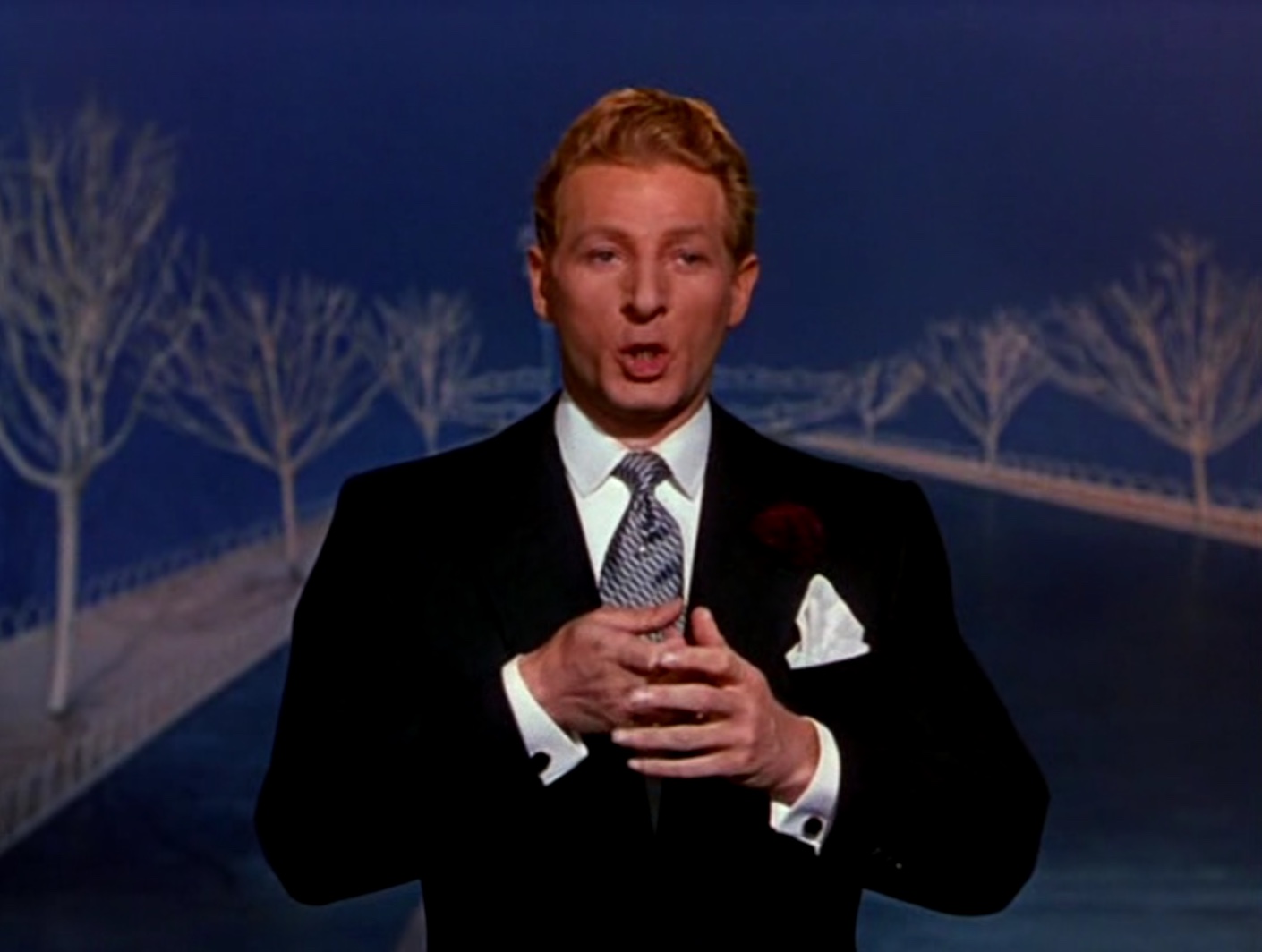The Secret Life of Walter Mitty (1947)
“The Secret Life of Walter Mitty” by James Thurber has spawned multiple cinematic adaptations since it first appeared in the pages of the New Yorker in 1939. It’s not a long story—just over 2,000 words long—but it is a universal one. That of the wide-eyed dreamer taking frequents breaks from the dull mundanity of existence. This 1947 adaptation starring Danny Kaye in the titular role swaps out his wife for a domineering mother, adding an air of juvenility to this well-worn tale.
Kaye: Gray flannel suit, white shirt and gray tie. Old man: Gray rain coat.
Allow me to be frank at the commencement: I have perhaps never connected with a character so deeply as Walter Mitty. Absent-minded, incessant day-dreaming, letting people walk all over you, etc. It’s the kind of film that directly appeals to teenage space cadets like me when I first watched it on a VHS my dad recorded straight off television.
Revisiting the film as an adult, there’s less of an intense feeling of “that’s me!” so much as a forlorn “I wish that was still me.” Mitty has one of those great jobs—copy editor at pulp magazine publisher—that sadly no longer exists. His daydreams aren’t just vivid, they’re positive and uplifting. His dreams make him into a hero instead of just taking him away from reality. It makes me long for the days when I only picked up on the wonder instead of the wistfulness.
Kaye: Black blazer, white french-cuffed shirt and print tie.
As for the fashion, however, the Secret Life of Walter Mitty still fills me with that same sense of wonder I felt when I first time I saw it. The wonderfully over-saturated Technicolor is perfect for Mitty day-dreaming in a lounge during WWII and meeting a wheelchair-bound uncle in a sumptuous red smoking jacket.
The 1940s was a time when American men really knew how to dress. Suits, ties and fedoras in public; smoking jackets and ascots in private. It’s a pity that most of the films from the era were in black and white—beautifully shot black and white noirs, mind you, but still black and white. Countless suits and ties that may have been brilliant blues and yellows instead reduced to different shades of gray. Color film was mostly reserved for the hit-and-miss musicals of the day. Walter Mitty is a musical in the sense that some of Danny Kaye’s manic goofery is technically music but the structure and content make it a light-hearted, farcical noir.
Kaye: Blue suit, white shirt and print tie. Boor (Left): Black suit and print tie.
The gray flannel suit Walter Mitty wears throughout much of the film was the standard suit of the time. (A look so ordinary that it became the name of best-selling novel later turned into a middling Gregory Peck vehicle in 1956.) This dull ordinary look helps make the more exotic, interesting outfits in his fantasies pop.
But the true standout here is the wealthy, paraplegic uncle’s smoking jacket collection. These jackets are hard to find these days. They may well have always been hard to find. The only people who seem to wear smoking jackets are rich old dudes who can afford to have them custom-made. It’s a fairly limited article of clothing—only to be worn when entertaining or lounging about your home—but they always look comfy as all get out. The uncle’s red smoking jacket would’ve been a good enough excuse on its for the filmmakers to use Technicolor.
Uncle: Red smoking jacket, cream scarf, white shirt and black tie.




